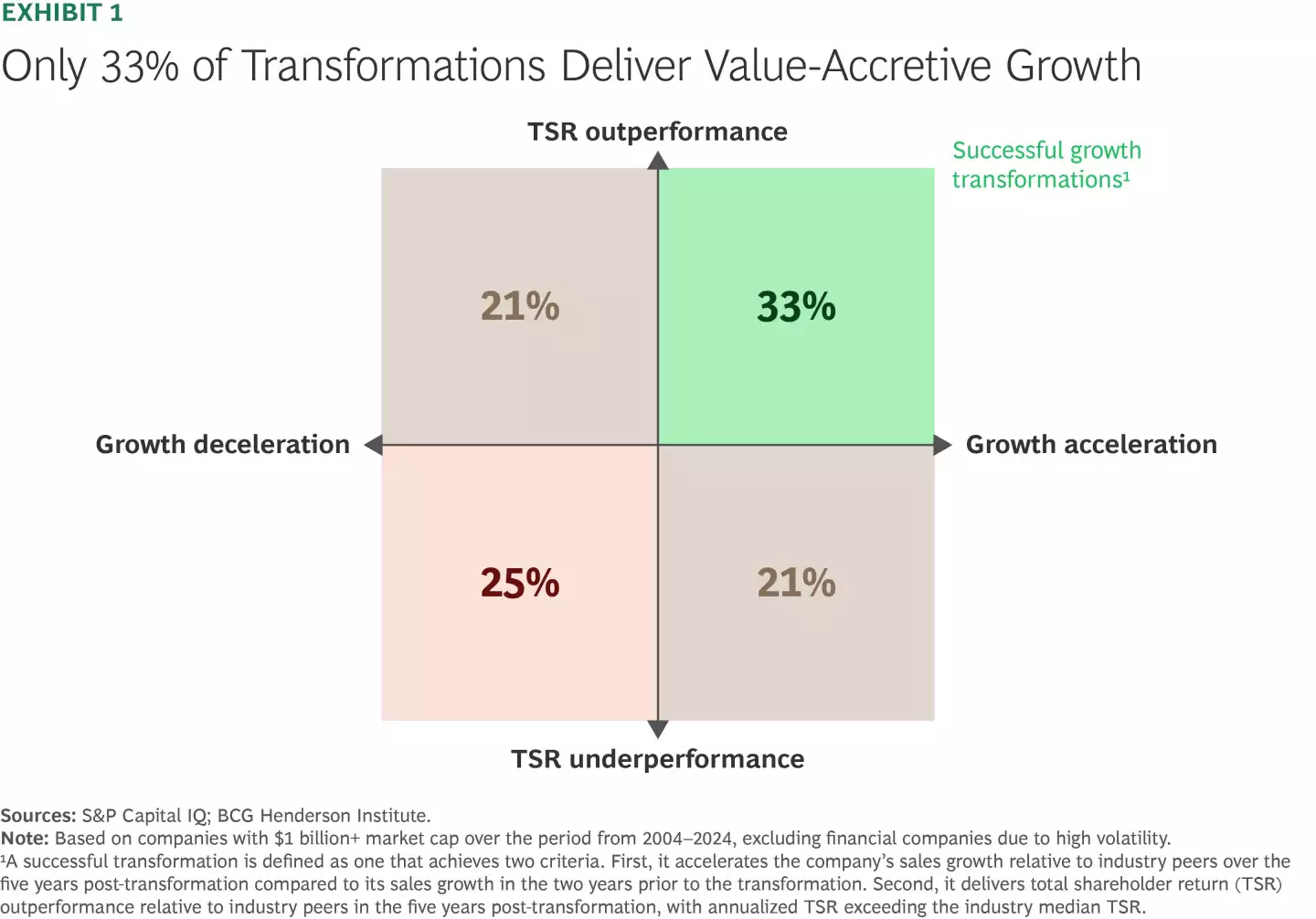Business leaders can no longer rely on a tailwind to boost growth. They face encroaching constraints on all fronts: trade wars are eroding the globalization premium businesses have enjoyed over the past 30-plus years; the era of essentially free capital, which Western firms had enjoyed for more than a decade, has ended; and, with the ongoing demographic shift, automatic population-driven growth is no longer a given in most of the developed world.
Consequently, in the first quarter of 2025, GDP growth forecasts were revised downward for the US and EU. Achieving growth in this environment will require a dedicated effort—a growth transformation. Unfortunately, such transformations have low odds of success: our analysis of 1,700 transformations globally over the past 20 years shows that only about one-third accelerate growth in a value-accretive way. (See Exhibit 1.)

Successful growth transformations tend to share some common factors, our research shows. (See “The Ten Success Factors.”) Companies that deployed five or more of these key factors saw nearly double the success rate compared to those that applied none.
Just as significantly, our research reveals that the current economic environment shouldn’t dissuade leaders. Transforming for growth may seem like an audacious undertaking today—but we’ve found that the success rate for such transformations is actually higher in times of low growth than in other years. The upshot? Company leaders have the chance to turn slowdown into renewal.


